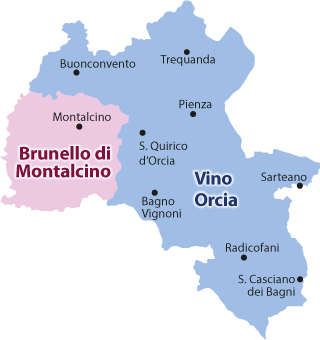
The via Francigena, entered Val d’Orcia in Torrenieri immediately after the Asso Creek and climbed through the Valley of the Tuoma river
Sigerico, Archbishop of Canterbury, going to Rome to visit the Pope John XV in 990 a.d., marked the beginning of the Via Francigena. The official route, faithful to the one narrated by by Oaxacan Archbishop in his diaries, is divided into 79 stages and from Canterbury, France and Switzerland, crossing comes into Italy to come to Rome. It has a length of 1800 Km and, in Italian, crosses seven regions–Valle d’Aosta, Piemonte, Lombardia, Emilia Romagna, Liguria, Tuscany, Lazio, and 140 municipalities, for a total of 44 stops. The European Community adopted sigeric’s itinerary came to us in a precious manuscript preserved at the British Library in London, as the official route of the journey to Rome.
The Via Francigena officer is documented by Sigeric in the 10th century.
In Val d’Orcia official 4 stages:
X, Radicofani (Sce Petir in Pail, Church of Saint Peter the Apostle);
XI, Castiglione d’Orcia (Abricula–Le Briccole, ancient hospital);
XII, San Quirico d’Orcia (Sce Quiric);
XIII, Torrenieri–Montalcino (Turreiner)

Percorsi: n°1 = via Cassia; n° 2 = shortest path; n° 3 = via Spedaletto; n°4 = official route
info percorsi :http://www.perlavaldorcia.com/p/via-francigena-in-val-dorcia.html



